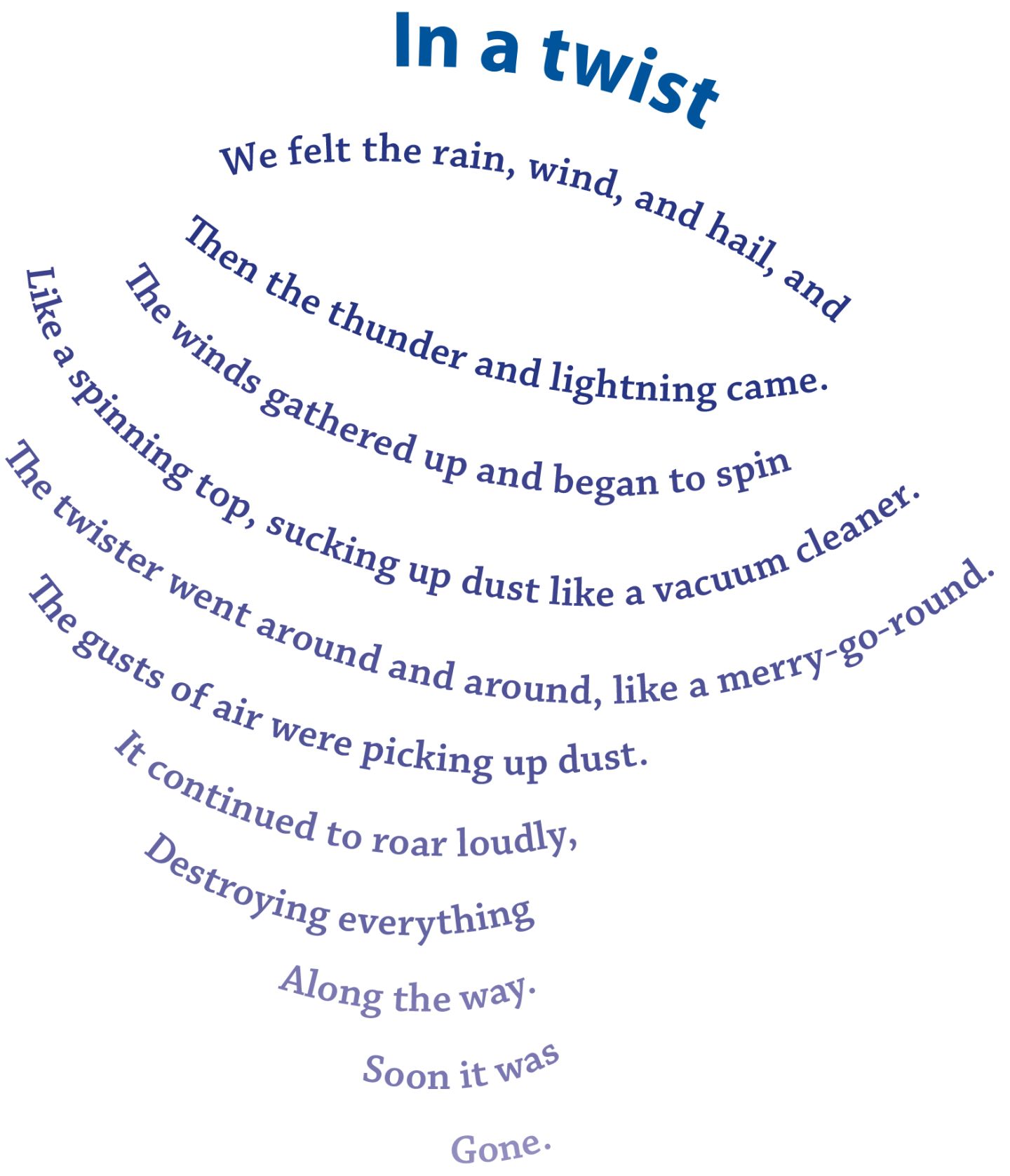

Once students are done writing their poems or paragraphs have them draw their objects. It might be helpful for them to have it in front of them so they can draw their own arrows and see the combinations on a piece of paper. You can give them the columns that are attached to this lesson plan to work from as well. Have students write at least ten lines or sentences. Below are some first lines you can use:ġ) The desk twirls easily in the middle of the classroom.Ģ) The bed steps carefully over the sleeping people.ģ) The toothbrush walks softly over my big teeth.Īfter the collaborative poem, have students chose one object that they will write about in all of their lines.

Start them out with the first line and then see if they can continue the lines. Construct your line based on what they’ve picked out. You could demonstrate this by drawing arrows from one thing in one column to another thing in the next, this way students will have a way to visually follow along. By the end of the poem we should really believe that the desk is walking around and talking to people. The object can do whatever it wants and they can use any of the words from the other two columns, but the object needs to take on human characteristics. It's also an excellent way to integrate poetry writing into your reading class (write a poem from a. It's exciting and challenging to push them to 'get inside the head' of someone else.

The first quatrain will have lines that end in a rhyme scheme like. Persona Poems, poems written from the point of view of another person or an inanimate object, are one of my favorite types of poems for students to write. Have them chose an object from the first category and then an object from each of the other categories. Your 14 line sonnet must be written in three sets of four lines and one set of two lines. Write a collaborative poem on the board together. In the last column have them come up with adverbs. Then in the second column ask them to come up with several verbs. In the first column have them write down a list of ten objects (explain that these objects are nouns) that they see every day. (When an object has traits or begins to behave as if a person would.)ĭiscuss the various forms of personification in the poem.Īsk studentes to divide their paper into three columns. Go over some of the Spanish lines so that all students are aware of the unusual traits the poem is addressing. Generate a list of unusual things the students notice about the poem, in both English and Spanish.


 0 kommentar(er)
0 kommentar(er)
